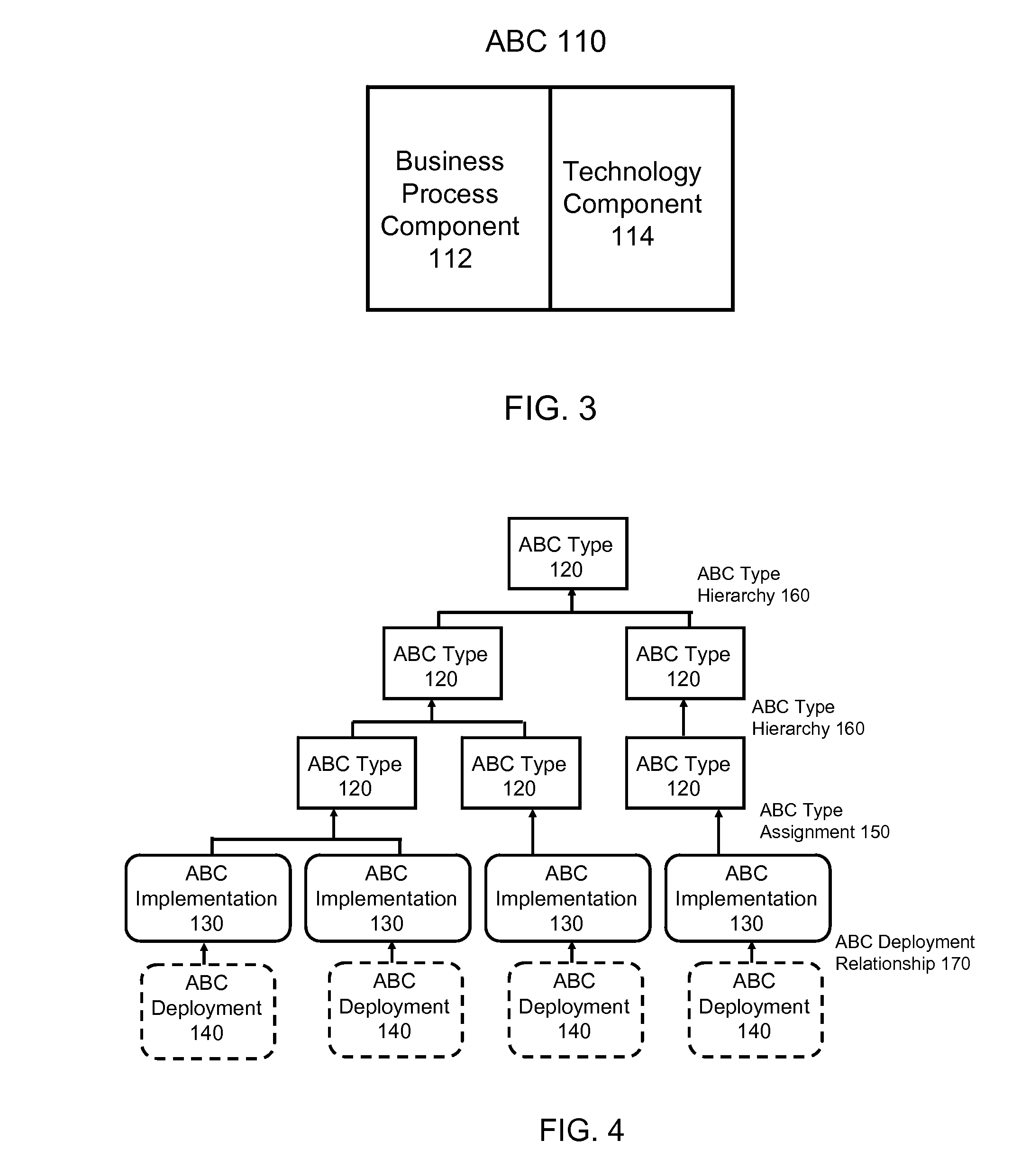System and method for managing the complexity of large enterprise architectures
a technology for enterprise architectures and systems, applied in the field of system and method for managing the complexity of large enterprise architectures, can solve the problems of ea efforts that are typically very expensive, more likely to have major ea failures, and month by month, and achieve the effect of easy learning and application
- Summary
- Abstract
- Description
- Claims
- Application Information
AI Technical Summary
Benefits of technology
Problems solved by technology
Method used
Image
Examples
example
[0131]Assume that at the end of the Simplification Phase 1300, we have identified three ABCs that need to be implemented: Inventory-Management, Order-Processing, and Credit-Card-Processing. We have already decided to outsource Credit-Card-Processing, but this still leaves us with two ABCs that need to be implemented: Inventory-Management and Order-Management. In the Prioritization Phase 1400 the question we are now addressing is which one we should implement first. Note that because we have partitioned the EA 100 using the equivalence relation synergistic, we can be assured that the various ABCs 110 are autonomous with respect to each other. This means that either ABC can be implemented and it will have a full set of functionality that it needs to complete its work. In the Prioritization Phase 1400 we will decide which of these two ABCs 110 to implement first, Inventory-Management or Order-Processing.
[0132]In this example, we have decided to use eight Factor Axes as follows:[0133]Fa...
embodiment
DESCRIPTION OF EMBODIMENT
Validation Only
[0161]Another alternative embodiment of this invention is to use only the validation tests (500, 510, 520, 530) to validate an existing architecture (either at the enterprise level, the business process level, or the information technology level) to see if it can be improved.
PUM
 Login to View More
Login to View More Abstract
Description
Claims
Application Information
 Login to View More
Login to View More - R&D
- Intellectual Property
- Life Sciences
- Materials
- Tech Scout
- Unparalleled Data Quality
- Higher Quality Content
- 60% Fewer Hallucinations
Browse by: Latest US Patents, China's latest patents, Technical Efficacy Thesaurus, Application Domain, Technology Topic, Popular Technical Reports.
© 2025 PatSnap. All rights reserved.Legal|Privacy policy|Modern Slavery Act Transparency Statement|Sitemap|About US| Contact US: help@patsnap.com



